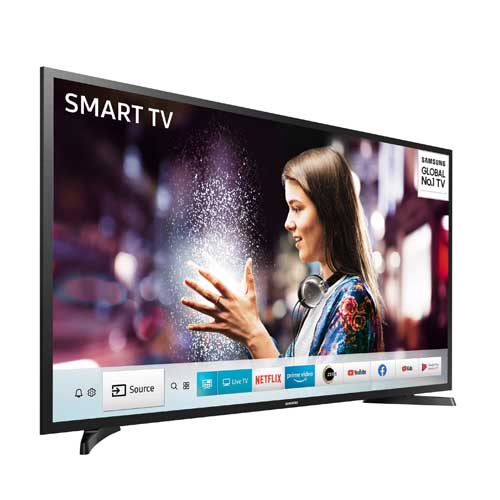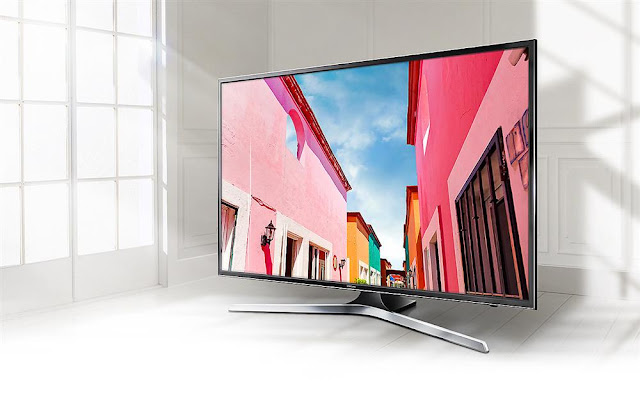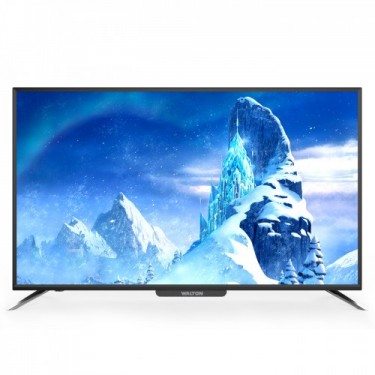Suggestions For Purchasing A Smart Television
We can support you search a suitable Samsung tv price in Bangladesh for you, whether it's for sports viewing, watching Netflix in your bedroom, or annoying neighbors with loudspeakers.
Here are the top questions you should ask when purchasing a new television set. These include screen dimensions, speakers, and any other data that might be helpful.
Select a screen measurement
There are a wide variety of screen sizes available, ranging from 24-inches up to over 100-inches. How do you find the proper measurements?
These are the general dimensions. The most recent televisions are available in a 49-inch size. Even though 55-inch televisions are very popular, there are a few in 65-inch sizes and higher. However, you will need plenty of space. It's easier to fit smaller sizes, such as 32-inch or 43-inch televisions, in tighter spaces, and they won't take up too much space.
To ensure that the dimensions of your television will fit in the space you desire, we suggest measuring tape to your bedroom wall. It is essential to consider the distance between your television and where you will be sitting. Your screen measurement must be approximately twice the distance between your seat and the set. For example, a 43-inch TV will require you to sit at least 5-6 feet from the screen. A 55-inch television can be set at 7-10 feet, while a 49-inch TV requires 8 feet.
It is possible to fit a larger screen in a smaller space. These calculations are reasonably conservative, but keep in mind that they could be pretty dominant.
Wall-mounting
Many people believe they would like to wall-mount the latest flat TVs. Research suggests that only a few people want to wall-mount their flat televisions.
There are some things you should consider if you are sure that this will work for you. First, the TV will look perfectly flat against the wall. It will also be a little further from any seats. So you may want to increase the screen size.
Second, consider televisions that are designed to be mounted on ultra-low profile mounts, so they stand out as much as possible against the wall.
You can also opt for a TV with compatible wall mount screws, as many televisions do not ship with them. Another thing to remember if you are considering wall-mounting your television is the set's realistic viewing angles, especially if you plan on mounting it above a fireplace.
Panel technologies
You need to know the difference between OLED and LCD television technology. There are some essential differences on the OLED side.
LCD or LED Televisions
It is essential to consider how the LCD panel lights up when considering purchasing an LCD Television. This can make a big difference in the contrast that the TV is capable of.
Some lights are mounted at the edge of the screen and fire across the screen, while others are mounted behind the screen. Televisions with lights placed behind the screen provide better contrast than those that are edge-lit. These versions, however, don't have the same slim design and are often more expensive and use more power.
Local dimming is another option for LCD Televisions. This advanced feature allows a TV to emit different amounts of light from different sections of its edge or direct lighting arrays. It can also dramatically increase contrast.
HDR and Resolution
You have two resolution options to pick from Ultra HD or HD. Ultra HD TVs have 2160 pixels, while HD Televisions have 1080. Ultra HD TVs can display images with a higher resolution because they have four times the number of pixels than HD. We suggest getting a 4K television, even if you’re current 4K source is not available. This is especially true if your TV is 49 inches or larger.
We suggest 4K for the main bedroom TV, but HD Televisions are great for second screens.
What about HDR? HDR is a high-dynamic-range television that can produce images with more contrast and brightness than regular televisions, provided they are fed HDR content. The HDR TVs of now also support a broader color spectrum than non-HDR Televisions. This is an excellent characteristic since almost all HDR content also has wide-color spectrum image data.
Ports and connections
USB ports can be used to playback multimedia from USB drives and record from the TV's tuners onto a USB hard drive attached. Check out at least a few, but ideally several USB ports.
Samsung smart tv price in Bangladesh have Wi-Fi or Ethernet ports built-in so you can connect to the internet. However, not all TVs allow you to use these net operation connections to access multimedia stored on another device. If this is something you are looking for, ensure that the television you purchase supports it. 32 inch led tv price in Bangladesh support Bluetooth communication with external devices.
Sound and Speakers
Flat televisions have a wide range of sound quality. This is why you need to pay attention if you don't plan to use an external sound system. Although most brands will give a range of watts for their TV speaker systems, this is not a good indicator of how the television will sound. Instead, look at the number of speakers and configurations on TV speakers.
Sub woofer speakers are always welcomed, as television speakers often struggle to handle the bass end of the sound spectrum. A second audio difficulty is that thin televisions lack bedroom speakers, so they must fire their sound downwards. This can cause a muddy and incoherent sound. Televisions with forward-firing speakers sound cleaner and more powerful. TV price in Bangladesh 2021 have sound bars built into their main screen frames.
A final warning: You should be skeptical about claims that televisions can decode Dolby Digital surrounds. Without rear speakers, no TV can provide a surround sound experience that is as good as surround sound. Many televisions sound terrible if they do. A good stereo sound, mainly when it includes a sub-woofer for bass, is more reliable than a half-baked pseudo surround sound system.
Smart TV platform
Nearly every TV can now be connected to the broadband internet to allow access to online characteristics. In some cases, you may also have access to media files stored on other storage devices, such as smartphones, tablets, and PCs. Although this sounds fantastic on paper, intelligent characteristics' actual utility and quality can be very different.
If you have several private innovative tools, TVs that can access content from other tools in the room are worth looking out for. Don't let app numbers fool you when it comes to online attributes. Most TV apps are pointless and clutter up the intelligent interface.
Quality is more important than app quality. Online streaming services are essential online attributes for many households. YouTube, Netflix, and streaming services for local broadcasters are all critical. Simplicity of an innovative TV interface is a significant factor in how you use it.
Brightness
Sets that are brightly lit on the shop floor can support you gauge how well your TV's images will perform in a bedroom. For small TVs, a lack of brightness can be difficulties. This is a difficulty that has become increasingly important for large-screen customers, thanks to introducing the high dynamic range technology.
A television without sufficient brightness won't produce the necessary color highlights and bright white for a successful HDR image. They will appear flattened and lacking detail as if they have been bleached of their color tone details.
HDR images created by televisions that are not bright enough will cause them to view too dark or make the dark areas of the image appear dominant. To test TV’s HDR brightness, you can put a picture on the screen showing a dark object and lots of detail against a bright background. A TV that struggles to brighten may cause the dark object to appear silhouette-like.
Keep in mind that TVs with high brightness can have more trouble than those with lower brightness when it comes to black level, contrast, and backlit stability. Also, don't assume that brightness alone will make the difference. Instead, look at brightness and contrast issues as a balance.
Viewing angles
In many living rooms, it can be challenging to see a TV from an angle. This can be done on any television that you are interested in. To check, pause an image of a brightly colored object against a dark background and walk around it while looking for the following:
- Grayness in areas of the image that are black when viewed directly-on
- Colors lose vibrancy
- An increase in the appearance of halos, stripes, and backlit clouds.
If one or more of these issues become distractedly obvious, take note of the angle that you are viewing the screen from. Then, adjust your living room seating positions to reflect this angle.
Motion
Two motion difficulties can affect televisions: blurred and judder. You can view both with 60Hz content, 50Hz, and 24Hz content.
Does your camera pan stutter? Are fast-moving objects blurred or lacking detail? Do they leave behind a trail of smeary trails? Are you able to see 'freezes' in action scenes? Are vertical lines affected by camera pans that cause them to 'double'?
Many TVs have motion processing that can be used to reduce blurring and judder. These processing systems can create difficulties, such as shimmering around moving objects and flickering over areas with a swift motion. Also, they tend to smoother out judder, so images, especially 24-frames per second video images, are left watching unnaturally fluid.
Keep in mind that televisions have various strengths for motion processing. You can adjust the settings to get a more satisfying understanding of a TV's motion performance.
Tag:




Comments
Post a Comment